UV-C Tunnel Technology: A New Standard in Baggage and Parcel Sanitization
UV-C Tunnel Technology: A New Standard in Baggage and Parcel Sanitization
In an age where hygiene and safety are of utmost concern, especially in high-traffic environments like airports and warehouses, innovation is key to ensuring public health and operational efficiency. One such innovation is the UV-C Tunnel technology developed by SJK Innovations, which is transforming the way we think about sanitizing baggage, parcels, and other items that move through these busy spaces. This technology is not only elevating hygiene standards but also providing an effective and automated solution to combat the spread of harmful pathogens.
What is UV-C Technology?
Ultraviolet (UV) light is a form of electromagnetic radiation, which falls outside the visible spectrum. Among the different types of UV light, UV-C light has been recognized for its powerful germicidal properties. It can penetrate the cell walls of microorganisms, including bacteria, viruses, and fungi, disrupting their DNA or RNA, thereby rendering them inactive or destroying them. This makes UV-C an ideal solution for disinfecting surfaces and air without the need for harsh chemicals, making it both effective and environmentally friendly.
How UV-C Tunnel Technology Works
SJK Innovations’ UV-C Tunnel systems are designed to sanitize items such as baggage, parcels, and containers in high-traffic locations, such as airports and warehouses. These tunnels employ UV-C light to disinfect surfaces quickly and effectively as they pass through the system. The design typically involves conveyor belts or rollers that carry the items through the tunnel, while UV-C lamps are strategically positioned inside the tunnel to expose the items to a powerful dose of ultraviolet light.
The process works as follows:
Item Placement: The item, such as a piece of baggage or a parcel, is placed on the conveyor belt or entered into the system.
UV-C Exposure: As the item moves through the tunnel, UV-C light is emitted, covering all exposed surfaces. The length of time and intensity of the UV-C exposure can be adjusted based on the type and size of the item.
Disinfection: The UV-C light disrupts the cell structure of pathogens on the surfaces of the item, effectively neutralizing viruses, bacteria, and other harmful microorganisms.
Output: The sanitized item exits the tunnel, ready to be handled, moved, or processed without the risk of contamination.
Why UV-C Tunnel Technology is Crucial for Airports and Warehouses
Airports and warehouses are bustling environments where large volumes of items are processed daily. These spaces are often shared by numerous people and goods, creating potential hotspots for the spread of infections. The COVID-19 pandemic heightened awareness of the need for stricter sanitation practices in these environments, especially as travelers and workers frequently handle baggage, parcels, and packages.
Here’s why UV-C Tunnel technology is becoming the new standard in these industries:
Automated and Efficient: Unlike manual sanitization processes, UV-C Tunnel technology is fully automated, which allows for faster and more efficient disinfection. In high-volume environments like airports, the speed at which the system works ensures that the flow of baggage and parcels remains uninterrupted, saving time while ensuring safety.
Non-Chemical Disinfection: UV-C light provides an effective means of disinfecting items without the need for chemicals or water, making it ideal for environments where traditional cleaning methods might damage sensitive goods or create unwanted residue. This also makes it more eco-friendly, aligning with sustainability goals.
Comprehensive Coverage: UV-C light can disinfect even the most challenging surfaces that are hard to clean manually, such as zippers, handles, or corners of baggage. This ensures that all exposed surfaces are sanitized, reducing the chances of pathogens surviving and spreading.
Health and Safety Compliance: Many international health and safety standards now require heightened sanitation procedures to protect both staff and the public. With the implementation of UV-C Tunnel systems, airports and warehouses can stay in line with these global regulations while offering an extra layer of protection for passengers, customers, and employees.
Reduced Human Error: Manual cleaning often relies on human resources and can be prone to errors, missed areas, or inconsistent results. UV-C Tunnel systems, however, provide a standardized, reliable approach to sanitization every time, minimizing the chances of contamination due to oversight.
Boosting Public Confidence: In post-pandemic times, travelers and customers are more concerned than ever about hygiene. By visibly adopting UV-C Tunnel technology, airports and warehouses can assure their patrons that they are prioritizing safety, boosting consumer confidence and encouraging the use of these facilities.
Conclusion: A Safer Future with UV-C Technology
As global health concerns continue to evolve, UV-C Tunnel technology by SJK Innovations represents a critical step forward in ensuring hygiene, safety, and operational efficiency. Whether in airports where thousands of bags are processed daily or in warehouses that handle a continuous stream of parcels, UV-C Tunnel systems offer an effective, environmentally friendly, and automated solution to the problem of pathogen transmission.
With the added benefits of quick disinfection, non-toxic processes, and alignment with global health and safety standards, UV-C Tunnel technology is set to become a permanent fixture in the way businesses approach sanitation and public safety. In the coming years, as this technology becomes more widely adopted, it will play a pivotal role in shaping a safer and healthier environment for both employees and customers in airports, warehouses, and beyond.


